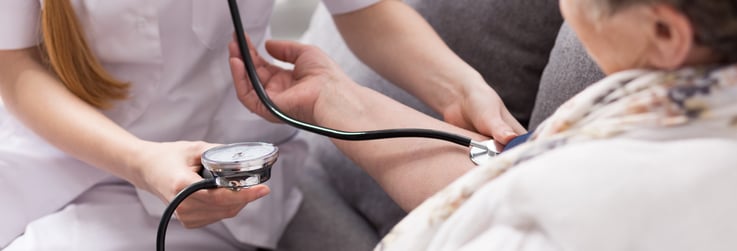
The National Pressure Ulcer Advisory Panel (NPUAP) in collaboration with Creighton University Health Sciences Continuing Education, recently hosted a webinar on Considerations for Bariatric Patients in Pressure Injuries and Wound Care. This program focused on the “how” and “why” we do what we do when caring for residents with a diagnosis of obesity as their needs often differ.
At the beginning of the program a review of the International Guidelines Recommendations for Organizations was discussed. These guidelines include:
- “Provide safe, respectful care and avoid injuries to both the individual and health professional”.
- “Maximize workplace safety by implementing organization wide bariatric management strategies that address manual handling techniques”.
- “Provide pressure redistribution support surfaces and equipment appropriate to the size and weight of the individual”.
Some of the discussion focused on why the assessment process for Bariatric residents is “different” as “there is nothing that makes an obese person ordinary when it comes to being a patient or a resident”. The norm today is to assess a resident’s risk using their BMI score however this process does not take into consideration the size of the person, thus is not accurate when used in this population.
Add to this, Bariatric residents have reduced tissue perfusion, compromised moisture barrier, chronic inflammation and thinning skin! The program went through a comprehensive outline of the four major steps for how to prevent skin injuries in this population. These steps include:
- Assessment
- Proper support surface
- Skin care
- Skin injury prevention protocols
Assessment – the discussion pointed out several important things to consider that we may not think about when assessing other residents. The standard is to assess skin daily and with any change in condition. Look inside the skin folds, places where skin is against skin. Although it doesn’t appear to be a “pressure area”, anytime skin is against skin there is pressure. Observe for MASD (moisture associated skin damage). Then of course the mandatory nutritional assessment, remember, just because a resident is outside of expected weight parameters does not mean they are nutritionally sound. Many residents with obesity make poor food choices and may be malnourished.
Proper Support Surface – Weight capability is only one factor! Identify how the device removes excess moisture and controls the temperature, if it reduces or increases friction/shearing, how difficult it is for the resident to rise independently, etc. Seating devices also need to be considered when reviewing support surfaces. Wheelchairs should be properly sized, not bind at the sides and should have proper padding to avoid sharp edges. The seat cushions should be specific for the resident and prescribed by a professional who will re-evaluate the device at least yearly (preferably every 6 months). Consider establishing an algorithm for support surface selection based on individual needs.
Skin Care – Daily cleansing in all problem areas (i.e., skin folds, under breasts, perineal area and any areas with excessive moisture). Use of pH appropriate products is helpful and always pat dry (never use heat). It is important that the skin be moisturized using humectants or emollients to keep the skin from drying out and becoming fragile. Moisture barrier creams are also helpful in skin folds and perineal areas. Consider use products with wicking properties in skin fold areas.
Skin Prevention Protocols – Turn and reposition schedules should be based on individual need and include repositioning while up in chairs. Monitor the height of the head of the bed (anything over 30 degrees increase the risk for shearing/friction). Friction and shear reducing linens are now available and have proven to be effective. Monitor for adequate hydration and nutrition and moisturize! If medical devices are being used (i.e., trach ties, bed pans, catheters, etc.) monitor sites frequently and address any reddened or irritated areas immediately. Avoid positioning on pressure injury sites and devices that create heat and remember, many residents need assistance with repositioning more than every 2 hours!
Safety – Always obtain proper bariatric equipment including beds, chairs, wheelchairs, stretchers, canes, lifts, slings, transfer devices, tables and seating cushions. Transfer slings must be in good condition and compatible with the mechanical lift being used. Avoid lifting or turning a bariatric resident manually, use equipment as needed. Remember, proper equipment provides the best measure of safety and care for residents as well as caregivers. Please refer to the Safe Patient Handling Guidelines for guidance at https://www.publichealth.va.gov/employeehealth/patient-handling/
A few closing comments on sensitivity and empathy: Remember, residents with a bariatric diagnosis often have no control over their situation and need your support. Reconsider using terms such as “large chair”, “big boy bed”, etc. but rather document “more comfortable chair/bed”. Recognize that obesity is not just a personal problem but a universal health problem with major health consequences.
Thank you for providing excellent care to all of your residents and as always, if you should have any questions or need additional resources please feel free to contact your HealthCap RMS risk manager!

